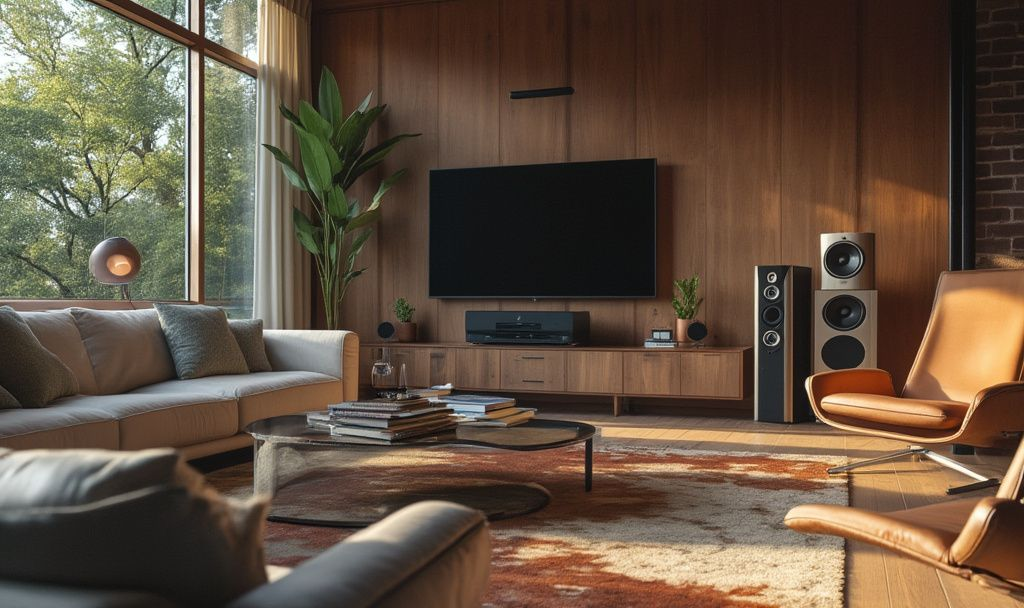Incorporating smart home audio into your living space elevates more than just your music experience; it seamlessly integrates cutting-edge technology with everyday convenience. From streaming your favorite playlists across rooms to configuring hands-free controls, discover how smart audio systems redefine entertainment at home.

In today’s fast-paced world, technology continues to transform our living spaces. One area where this evolution is clearly visible is in smart home audio systems. These systems have become a popular choice for those looking to integrate seamless sound experiences into their homes. By combining convenience, enhanced entertainment options, and the latest in audio technology, smart home audio systems offer more than just music—they offer a lifestyle upgrade.
Understanding Smart Home Audio
Smart home audio refers to audio systems that are connected to the internet, allowing users to control them remotely. These systems are integrated with a larger smart home ecosystem, enabling homeowners to enjoy music in various rooms, stream audio effortlessly, and control everything using smartphone apps or voice commands. Devices such as Amazon Alexa or Google Assistant are commonly used to facilitate these interactions, offering a hands-free, user-friendly experience.
For those interested in setting up a smart home, investing in a smart audio system can be an excellent choice. Such systems are designed to offer sleek and convenient solutions without the clutter of wires. For more information on smart home technologies, you can explore this comprehensive guide.
Why People Opt for Smart Home Audio Systems
The desire for smart home audio systems often stems from a need for more immersive and convenient entertainment experiences. By choosing smart audio, homeowners can have sound fill multiple rooms with minimal effort, enhancing the ambiance for everyday life as well as social gatherings. These systems also cater to those seeking wireless solutions for a cleaner, more contemporary home design.
Many people are also drawn to the idea of better audio quality, which smart systems are known to provide. With options that offer seamless integration with existing smart home setups, these systems stand out as a top choice for modern homeowners. For those interested in learning more about the concept of smart homes and how they work, this article provides an in-depth look.
Popular Tools and Brands in Smart Home Audio
When it comes to smart home audio, a variety of tools and brands dominate the market. Smart speakers like Amazon Echo, Google Home, and Apple HomePod double as both audio devices and potential hubs for smart homes. These speakers are compatible with numerous music streaming services such as Spotify, Apple Music, and Amazon Music, allowing users to easily play their favorite tunes with a simple voice command or tap on their smartphone.
Renowned manufacturers like Sonos, Bose, JBL, Samsung, LG, and Yamaha have also played key roles in advancing smart home audio technologies. These companies continue to develop systems that boast high sound quality while remaining energy efficient. For a deeper understanding of the latest trends in dialoguing with your devices, check this detailed source.
Emerging Trends in Smart Home Audio
As technology evolves, smart home audio systems are increasingly incorporating voice assistants and AI technologies. These advancements make the systems more intuitive and adapt to user preferences over time. Additionally, there is a growing emphasis on energy-efficient audio amplifiers that balance performance with power consumption, reflecting the industry’s commitment to sustainable innovation.
Moreover, the trend of integrating multi-room audio capabilities and outdoor audio solutions is gaining traction. This reflects a broader market movement toward providing holistic and immersive sound experiences that can be enjoyed both indoors and out. For more on the basics of smart home audio, explore this helpful resource.
Challenges and Considerations
While smart home audio systems offer many benefits, there are several considerations to keep in mind. Privacy issues arise as smart speakers and voice assistants continuously listen for wake words, posing potential risks of unintended audio capture. Additionally, compatibility between products from different manufacturers isn’t always consistent, which can limit user options and force reliance on specific ecosystems.
Furthermore, these systems often require a stable internet connection, which may be a challenge in areas with unreliable connectivity. Energy consumption is another aspect that deserves attention, as manufacturers strive to design more energy-efficient products to mitigate the environmental impact of always-on devices. For further technical insights into audio technologies, consider reviewing this technical document.
In conclusion, smart home audio systems stand as a shining example of how technology can enhance our daily lives. With ongoing innovations and considerations for user privacy and environmental impact, these systems promise to continue evolving alongside our needs.
FAQs
What are smart home audio systems?
Smart home audio systems are internet-connected audio devices that allow users to control them remotely, integrate with smart home ecosystems, and offer features like multi-room audio and voice command control.
Why are smart home audio systems popular?
They are popular due to their ability to provide immersive audio experiences, convenience through wireless solutions, enhanced sound quality, and seamless integration with existing smart home setups.
How do smart home audio systems work with voice assistants?
Smart home audio systems often use voice assistants like Amazon Alexa or Google Assistant for hands-free control, allowing users to play music, adjust volume, and manage other smart home devices through voice commands.
Which brands are leading in the smart home audio market?
Leading brands in the smart home audio market include Sonos, Bose, JBL, Samsung, LG, Amazon, Google, and Apple, known for their high-quality and energy-efficient audio systems.
What are the challenges of using smart home audio systems?
Challenges include privacy concerns due to continuous listening, compatibility issues between different manufacturers, the need for stable internet connectivity, and managing energy consumption of always-on devices.
